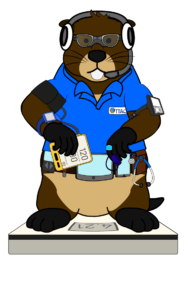2022 Remote Patient Monitoring Resource Round Up
Posted by on April 1, 2022

Remote Patient Monitoring is one of the key technologies that is changing the digital health marketspace. Here are some recent RPM resources to help you understand this telehealth technology.
- RPM Tech Talk with Kathy Wibberly– This quick explainer video goes through the basics of Remote Patient Monitoring Technology
- Technology Overview– A breakdown of key RPM concepts and what is happening in the RPM marketspace.
- “Tools for Remote Patient Monitoring” Webinar– TTAC conducted a webinar about how to choose RPM technologies for the California Telehealth Resource Center.
- TRC Resources: Check out these additional resources from our Telehealth Resource Center partners:
- MATRC RPM Toolkit– This downloadable resource is designed to help many different audiences. Check it out here.
- UMTRC RPM Webinars– The Upper Mid-West Telehealth Resource Center has hosted several webinars on Remote Patient Monitoring
- RPM Webliography– Looking for a handy list of articles and scholarly sources? Our friends a the Northeast Telehealth Resource Center (NETRC) have compiled this handy guide for you!
- Coming Soon-NCTRC Virtual Showcase Session Recording: “Transition of Care From Hospital To Home- A Remote Patient Monitoring Story”- Watch this space for our most recent recording from the NCTRC Virtual Showcase.
RPM Tech Talk
Kathy Wibberly, PhD, is the director of the Mid-Atlantic Telehealth Resource Center. In this Tech Talk, Kathy discusses remote patient monitoring technology, it’s uses and benefits, and resources that can help you deploy a successful remote monitoring program.
Technology Overview
Remote patient monitoring allows patients to collect medical information in their home and to transfer it to care providers for trend analysis and intervention. It is often used to monitor patients with chronic conditions or patients who have been recently discharged from an inpatient hospital stay. Using a variety of sensors (peripherals) connected to a communications hub the patient is able to collect their medical information which is sent to a monitoring system. Most monitoring systems will have automated alerting systems for high and low readings, as well as mechanisms for reporting and trending patient health trends from the collected data.
Common RPM conditions:
- Diabetes
- Congestive Heart Failure (CHF)
- Hypertension
- Post-surgical or Post-hospitalization monitoring
Common peripherals include:
- Blood Pressure Monitor
- Blood Oxygen/SP02 monitor
- Glucometer
- Digital Scale
- Thermometer
Different platforms might support some or all of these peripherals depending on program needs.
Connection Types- RPM platforms use a variety of connectivity technologies to collect and transmit data.
- WiFi- RPM hubs connect through a patient home wireless network to transmit collected results.
- Cellular- Cellular networks provide connectivity without having to integrate into a patient’s home internet. Cellular-equipped hubs and peripherals can be more expensive to maintain and deploy.
- Bluetooth- Most RPM peripherals will connect to the hub device using Bluetooth connectivity.
- Bring Your Own Device (BYOD)- A common trend is for patients to connect peripherals to their personal smart phone using an RPM app.
“Tools for Remote Patient Monitoring” Webinar
Remote monitoring technology enables healthcare providers to keep patients at home, out of the hospital, and engaged in their own care. The Telehealth Technology Assessment Center (TTAC) will provide an overview of remote monitoring technologies along with key questions organizations should consider when selecting these technologies. TTAC will also provide insights from their recent remote patient monitoring hardware assessment.
TTACs RPM Video Toolkit Part 1
Make sure to check back to see new RPM resources as they become available!
Recent Blog Posts
April 9, 2024
August 29, 2023
May 2, 2023
April 26, 2023
April 26, 2023
